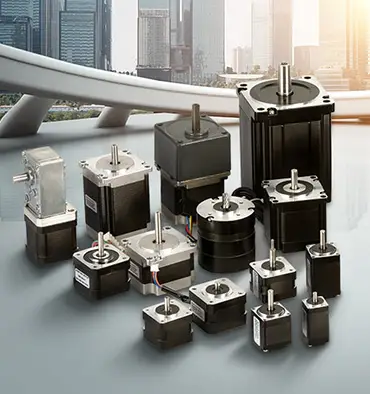How to program a stepper motor?
Programming a stepper motor can be a challenging task, but with the right knowledge and tools, it can be done relatively easily. In this article, we will provide step-by-step instructions on how to program a stepper motor, as well as some important tips to keep in mind.
Before we get started, it's important to understand what a stepper motor is and how it works. A stepper motor is an electric motor that rotates in discrete steps, or increments, rather than continuously. This makes it ideal for applications where precise control of the motor's position is necessary, such as in printers, scanners, and other types of precision machinery.
Now, let's get into the steps for programming a stepper motor.
Step 1: Choose the Right Stepper Motor
The first step in programming a stepper motor is to choose the right one for your application. There are several different types of stepper motors, each with its own unique characteristics and capabilities. Some common types of stepper motors include:
- Permanent magnet stepper motors: These are the most common type of stepper motor, and they are often used in applications where high torque is required.
- Hybrid stepper motors: Hybrid stepper motors combine the best features of permanent magnet and variable reluctance stepper motors, making them ideal for applications that require high torque and high speed.
- Variable reluctance stepper motors: These stepper motors are often used in applications that require high speed and low torque.
When choosing a stepper motor, it's important to consider factors such as the type of application, the required torque and speed, and the available power supply.
Step 2: Choose the Right Control Method
Once you've chosen the right stepper motor for your application, the next step is to choose the right control method. There are several different methods for controlling a stepper motor, including:
- Full step control: In full step control, the stepper motor moves in discrete steps, with each step equal to the motor's full step angle. This control method is simple and easy to implement, but it can result in lower accuracy and lower torque.
- Half step control: In half step control, the stepper motor moves in steps that are half the size of the motor's full step angle. This control method provides higher accuracy and higher torque, but it requires more complex control circuitry.
- Microstepping: In microstepping, the stepper motor is controlled in very small increments, typically less than one full step. This control method provides the highest accuracy and the highest torque, but it requires even more complex control circuitry.
When choosing a control method, it's important to consider factors such as the required accuracy and torque, as well as the available control circuitry.
Step 3: Choose the Right Control Circuit
Once you've chosen the control method, the next step is to choose the right control circuit. There are several different types of control circuits that can be used to control a stepper motor, including:
- Single-chip microcontroller: A single-chip microcontroller is a simple and inexpensive control circuit that can be used to control a stepper motor.
- Dedicated stepper motor controller: A dedicated stepper motor controller is a more advanced control circuit that provides improved accuracy and performance.
- Programmable logic controller (PLC): A PLC is a powerful and versatile control circuit that can be used to control a wide variety of devices, including stepper motors.
When choosing a control circuit, it's important to consider factors such as the required accuracy and performance, as well as the available budget and resources.


Leave a Reply